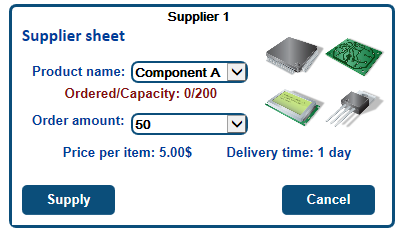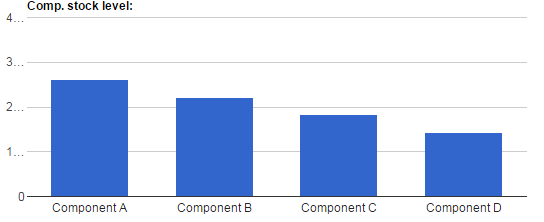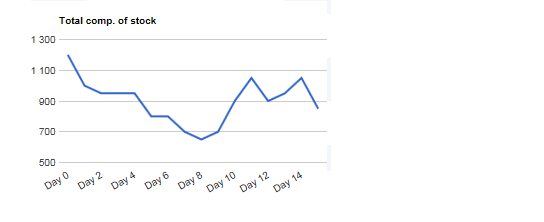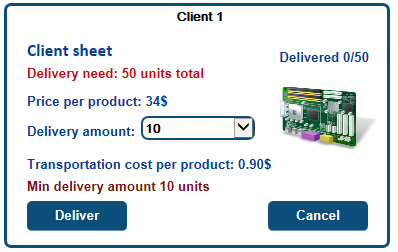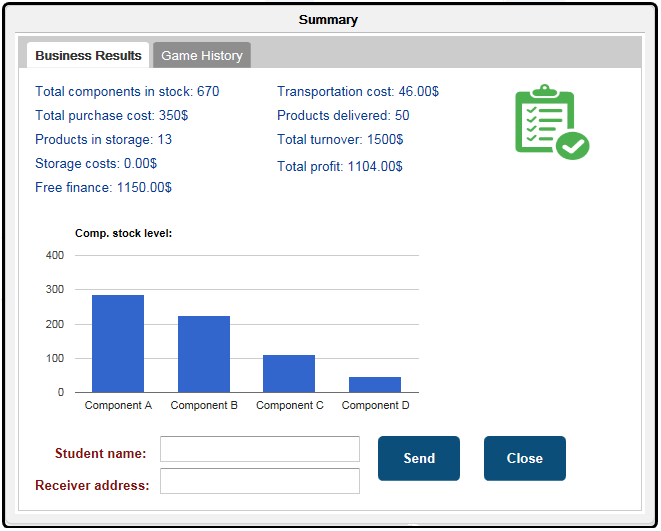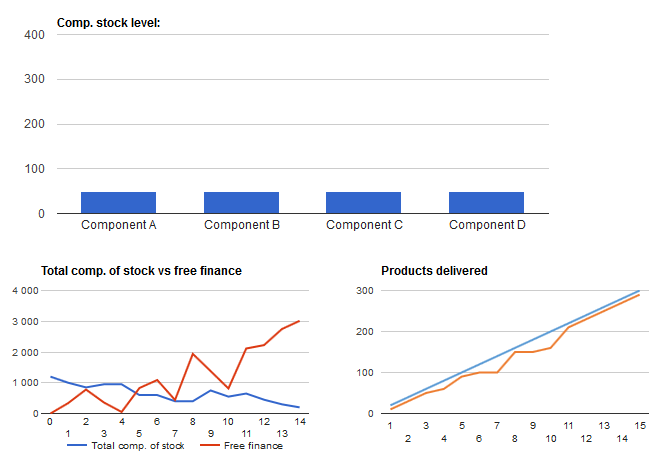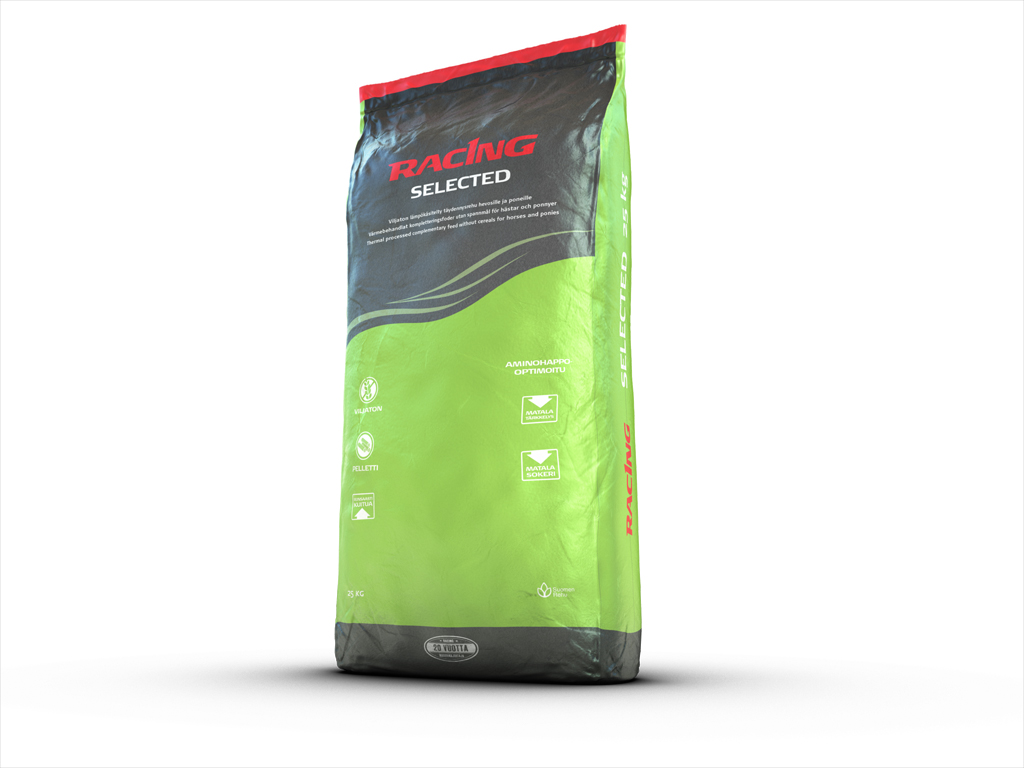Welcome to ChainSim training. ChainSim is online based educational simulation where student will manage the supply chain of small manufacturing company. It can be played individually or by teams.
In many companies the business sequentially be divided into three activities: procurement, manufacturing and delivery. ChainSim is focusing on the optimizing of a whole supply chain.
For students:
You are the manager of a small cell phone assembling company. Your mission is to: 1) fulfill all the clients needs 2) leave 50 units of each components in stock 3) leave 0 finished products in storage 4) earn maximum profit (prices for final products are fixed). The assigments require simple calculations which will help you to understand the basic relationship in the supply chain.
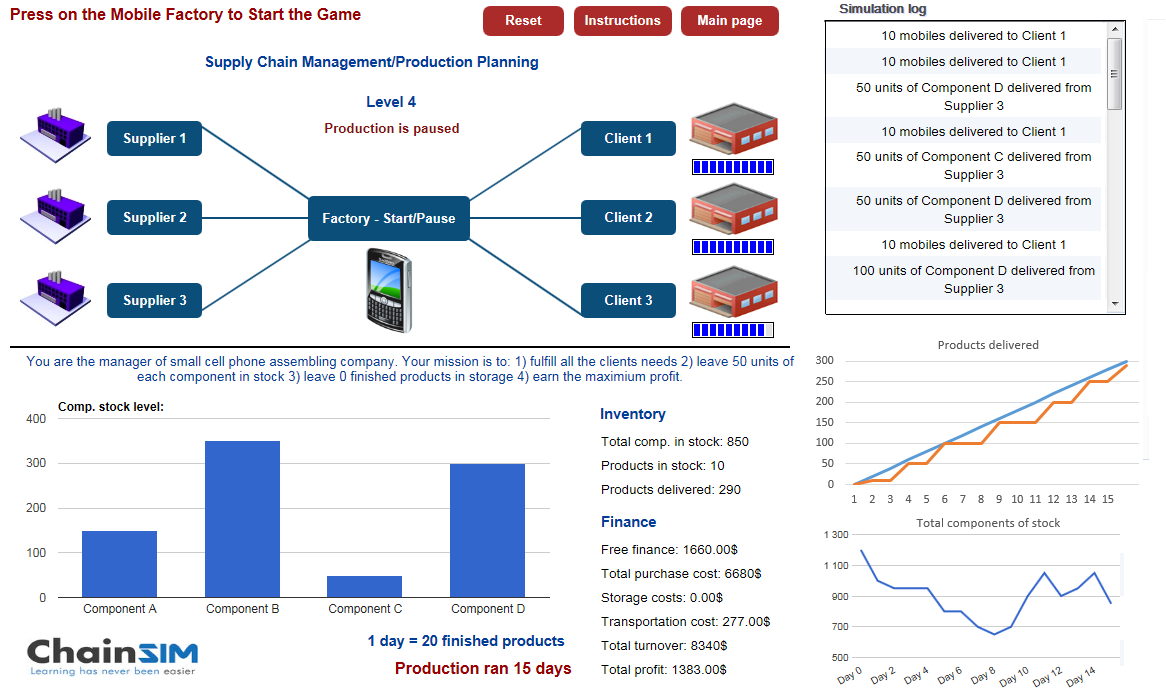
Production
To assemble one product/mobile manufactury need four different components:
1) One piece of coponent A 2) Two pieces of component B 3) Three pieces of component C 4) Four pieces of component D
The finished goods from production will be placed in the products inventory (“products in stock”) where from they are to be delivered to the clients/customers. If you have 50 products in stock, you will be charged 0,5$ for storage service for every additional product.
Suppliers
[one-half-first]
Organising for effective purchasing performance. There are three suppliers who can supply different components with different prices, volumes and lead times. You need to make orders from proper supplier with proper volume. You must keep manufacturing running by ensuring proper components in stock. Same time the inventory value should be as low as possible to ensure that capital is not unnecessarily tied up in materials. For liquidity management free finances indicator can not reach under 0$ in any moment.
[/one-half-first]
[one-half]
[/one-half]
Inventory management
In your inventory management you should avoid waste. This means that you need to avoid high raw material inventories by end of the production. Same time you need to determine your reorder point (ROP) what is the level of inventory which triggers an action to replenish that particular inventory/component stock. To keep production running you must keep enough components in your inventory all the time.
Therefore you need to do Material requirements planning (MRP) according to the number of final products you need to produce.
From level 3 you need to keep minimum 50 pieces of each component in safety stock – to describe a level of extra stock that is maintained to mitigate risk of stockouts (shortfall in raw material or packaging) due to uncertainties in supply and demand. Otherwise the production will be closed.
Inventory Turnover Ratio – The inventory turnover ratio is an efficiency ratio that shows how effectively inventory is managed by comparing cost of goods sold with average inventory for a period. Therefore is important to keep your production inventory level reasonably low. Students can easily calculate their Inventory Turnover Ratio of production and follow up online the average total comp. of stocks.
Inventory Turnover Ratio = Cost of Goods Sold/Average Inventory
Clients/Customers – Distribution
There are three clients with different needs of volumes. You can deliver products with different volumes and cost of transportation. With bigger dispatch you will get lower price for transportation. Prices of the products/mobiles are fixed and you can not changes that.
[one-half-first]
- Client 1 needs 50 units of mobile
- Client 2 needs 100 units of mobile
- Client 3 needs 150 units of mobile
- Totally 300 units to deliver
- Transportation cost depends also about client number
[/one-half-first]
[one-half][/one-half]
Results – send report to teachers email.
At the end of the simulations if you have delivered all finished good to the clients or if some of the components ran out of the stock, the summary window will emerge. It will summarise all the activites what student have done during the simulations process and gives the opportunity to send summary report to the teachers/lectors email (“Receiver address”).
- Total Components in Stock;
- Total Purchase Costs;
- Products in Storage;
- Average Inventory Level;
- Storage Costs;
- Transportation Costs;
- Products Delivered;
- Total Turnover;
- Total Profit.
Easy to evaluate students skills or use as teaching tool in different lessons. Student will understand established principles, theories and practices of purchasing and supply management, critically evaluate these, and link to various aspects of performance (financial measures as well physical inventory aspects).

